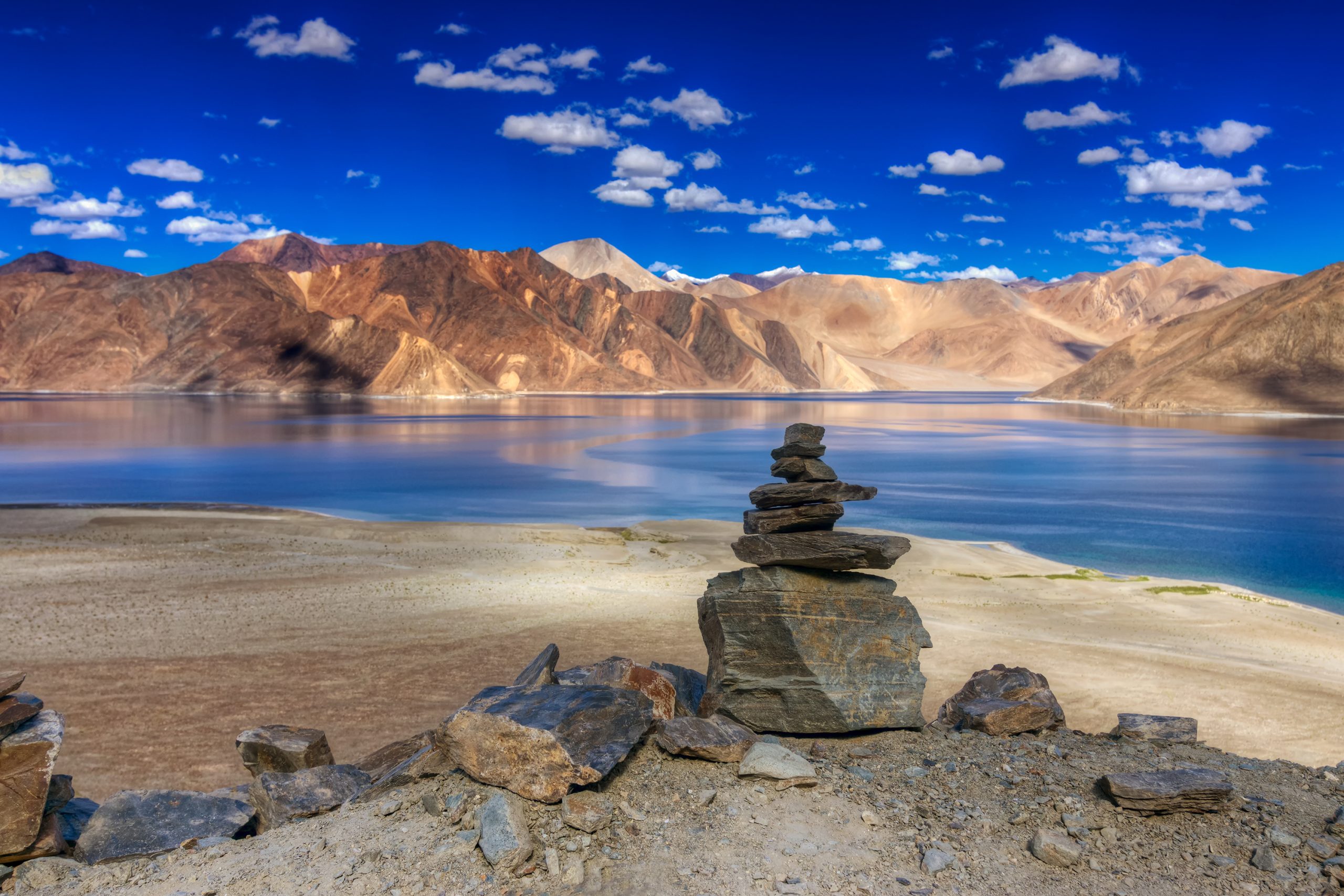
China’s India Challenge

Conspiracy: Therefore: Knowing the enemy, knowing yourself, a hundred battles will never end; knowing the enemy but knowing yourself, one win and one loss; knowing the enemy, knowing yourself, and losing every battle.
Attack by Stratagem: “If you know the enemy and you know yourself, you need not fear the result of a hundred battles. If you know yourself but not the enemy, for every victory gained you will also suffer a defeat. If you know neither the enemy nor yourself, you will succumb in every battle”
Sun Tzu, The Art of War
COVID19 and an aggressive China have been the biggest disrupter of the century, and have changed the behaviour of individuals, society, people and nations. As India was trying its best to battle the made in China coronavirus, providing much needed medical assistance to many a nation including the US, following Sun Tzu’s dictum “In the midst of chaos, there is also an opportunity”, China violated the spirit of the Five agreements which had ensured “Peace and Tranquility” along the 3488 km India – China border for nearly four and a half decades, resorting to its tried and tested strategy of ‘ Military Coercion’. While many have analysed India’s China Challenge, it may be prudent to view the narratives from a Chinese prism and look at ‘ China’s India Challenge’, with an aim of meeting and mitigating the China threat, again following the dictum of Sun Tzu ‘Know your enemy and you know yourself, you need not fear the results of hundred battles’. The key question which needs to be answered is what was China’s strategic intent and aims in unprecedented aggression along the Line of Actual Control (LAC). Most in India including many a strategic expert do not understand China; similarly the Chinese too lack an understanding of India.
The two nuclear-armed Asian giants, home to one-third of humanity, with a 3,488 Km long unsettled boundary, wherein China lays claim to a little over 1,10,000 square kilometres of Indian territory is not the only driver for potential conflict. India – China relations are a set of contradictions, with the congruence of interests, competition, coordination, and a conflict for the Geopolitical space in the emerging world order. As the power shifts from the West to the East, a risen, responsible, resurgent India, a global leader is not in the interests of China and its ambitions to challenge the US for a bipolar world. In the post-Covid emerging world order, India will be the balancing power in a US-China competition for supremacy. The US will try to retain its hegemony, negating China’s rise as a political, economic, military and technological power. This, of course, would be best achieved by the US by aligning with India and other like-minded democratic nations in the region. The US – India – Japan – Australia led Quad is seen by China as one such alliance in the security domain to limit China’s influence and threaten its economic interests in the Indian Ocean Region. The rebalance, reform and rechristening of the Asia- Pacific region to the Indo – Pacific by the US is indicative of India’s strategic importance and clout in the region. In a recently declassified report, which lays down the US strategy in Asia, states “China is the primary state actor of concern outlined in the document, followed by North Korea.” The strategy emphasizes countering China’s growing influence abroad by seeking strategic alignment with allies and partners, upholding a “liberal economic order” in the region, and working to “inoculate” the U.S. and its partners against China’s intelligence activities. The strategy also outlines a major expansion of military, intelligence, and diplomatic support to India as the primary regional counterweight to China — an approach which is likely to raise eyebrows in Beijing and Islamabad. The report goes on to amplify “The Trump administration has declassified a report which lays out its Indo-Pacific strategy, including “accelerating India’s rise,” blocking China from establishing “illiberal spheres of influence,” and maintaining “U.S. strategic primacy” in the region.
A fact which would have troubled an expansionist China as also will be seen as a threat to China’s security and economic interests. Eighty percent of China’s oil imports pass through the Malacca Strait, a “chokepoint” dominated by India’s Island territories in the Andamans. China’s reliance on maritime energy imports the ‘Malacca Dilemma’ has forced China to be more assertive, building Naval capabilities and investing in naval bases at Gwadar in Pakistan, Hambantota in Srilanka, Djibouti and Myanmar among others. In its 2019 Defence White Paper, China has stressed on the protection of its “maritime rights and interests” (Ocean rights) and safeguarding its “overseas interests” (Overseas interests). These interests undoubtedly entail actions in the Indian Ocean, including the supply of military equipment for its allies and building military bases and commercial ports. China perceives India’s Naval might and a working alliance, a convergence of interests with the US in the IOR as major challenges capable of harming and hurting its security and economic interests. India at long last signed the three foundational agreements, with the long-pending Basic Exchange and Cooperation Agreement (BECA) for geo-spatial cooperation, thus paving the way for a full-fledged and close strategic partnership between India and the US. BECA enables the supply of high-end equipment as well as real-time intelligence and information, which will allow India to piggyback on American geospatial information to hit enemy targets with pinpoint accuracy. These developments would have also prompted Beijing to see India as a growing competitor and adversary.
China’s aggressiveness along the LAC should be viewed in the larger strategic context. As India aims to transform to a ‘Modern, Prosperous and a Secure nation’ playing a major and positive role in the comity of nations, China sees an India challenge to its regional and Asian supremacy. Prime Minister Narendra Modi has repeatedly evoked the Indian philosophy of ‘Vasudhaiva Kutumbakam’ (the world is one family), taken from the Maha Upanishad, to elucidate the country’s global outlook. India, the world’s largest democracy with old civilisation linkages especially among the Afro Asian countries, is perceived as a threat to an expansionist China, capable of harming China’s national interests. India is the only country to openly oppose the China dream of ‘One Belt One Road or the Belt and Road Initiative (BRI)’. The BRI covers nearly 120 countries, approximately 60% of the world’s population, implementing over 6000 projects worth over One trillion USD. The second BRI forum at Beijing in April 2019 was attended by nearly 40 heads of states including 13 from Europe; the US too was represented albeit by a not so senior representative. The only mega nation-state conspicuous by its absence and openly opposing the BRI is India on a matter of principle, the BRI violates India’s sovereignty as it passes through Pakistan occupied Indian territory of Gilgit Baltistan. China Pakistan Economic Corridor (CPEC) is central to the China Dream of BRI. It is no coincidence that President Xi Jinping signed the Gwadar agreement giving China a forty year control of the Strategic Port on 15 March 2013, within 24 hours of assuming the supreme leader of China. As CPEC passes through sovereign Indian Territory illegally occupied by Pakistan, India’s opposition to the project is only justified, however any threat to CPEC and China’s massive investments are not acceptable to China. India will need to discern China’s intent and the larger strategic signals emanating from Beijing, in the geopolitical domain. As is a common belief, China’s aggressiveness is not on account of India operationalizing the Darbuk – Shyok – DBO road and thus posing a threat to Karakoram pass. China would not have waited all these years for the road to be completed; it would have done so earlier. China has invested heavily in BRI and hence is trying to coerce India into accepting the BRI or at best not opposing it. At the strategic level, the CPEC gives China access to Gawadar Port which has been leased to China for forty years, and mitigates its ‘Malacca Dilemma’. India demonstrated a political will by abrogating the provisions of Article 370 as applicable to J&K on 05 Aug 2019, carving out two union territories of J&K and Ladakh from the erstwhile state, rightly seeking full control of its territories occupied by Pakistan. This perceived threat to the CPEC is not acceptable to China, and hence the direct pressure on the LAC. The call to also liberate 38,000 square Km of Aksai Chin, the Chinese occupied territory of Ladakh is another possible factor for China’s aggressive behaviour.
The world at large feels that China could have minimised the damage done by the COVID19 pandemic, had it been more transparent and concerned about limiting the initial damage, helping nations in countering the threats as it had the early lead, helping all to develop a vaccine at an early date. China, in a way to counter nations speaking and acting against its interests, adopted an arrogant and aggressive three-pronged strategic approach of ‘Debt Trap’, ‘Wolf Diplomacy’ and ‘ Military Coercion’. Besides, China also feels that a resurgent and assertive India will directly threaten its core national interest of “One China Policy’ by supporting the Tibetian Cause, an unacceptable threat, as it aims to foster its reincarnation of Dalai Lama on the Tibetans world over.
In essence, China’s Indias Challenge is a risen, resilient, resurgent, responsible India, a regional power and a global leader, more acceptable to the world at large on account of its soft power and civilisation linkages. China hence justifies an illogical arrogance and aggressiveness blaming India for changing the ‘Status Quo’. China perceives an India aligning with the US, as a threat to its growing ambitions to be a world power, the sole ‘Asian Giant’, an economic powerhouse, capable of impeding and interfering with the China Dream of the BRI. India is seen as a threat to all critical Chinese economic and security interests in the Indian Ocean Region, capable of dominating the sea lanes of communication and the Malacca Straits. China also views India as a plausible threat to China’s core national interest of ‘One China Policy’.
China, however, went wrong miscalculating India’s resolve and resilience in countering the aggressiveness. China can’t afford a war with India as it prepares to challenge the US as the sole superpower, neither is war in India’s interests. As Sun Tzu says “Who wishes to fight must first count the cost”.

